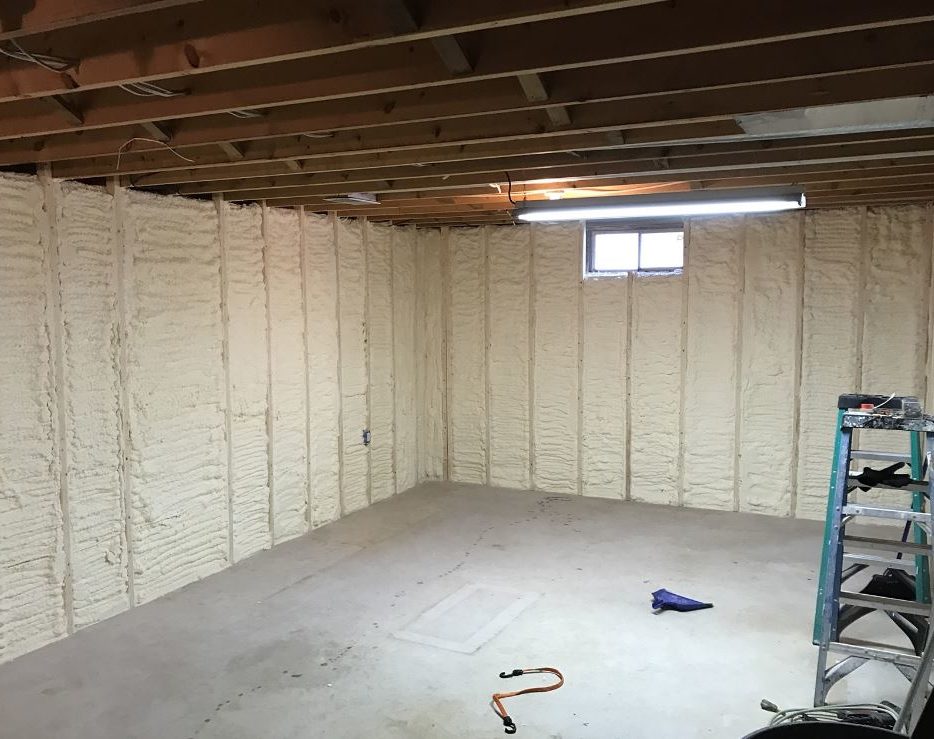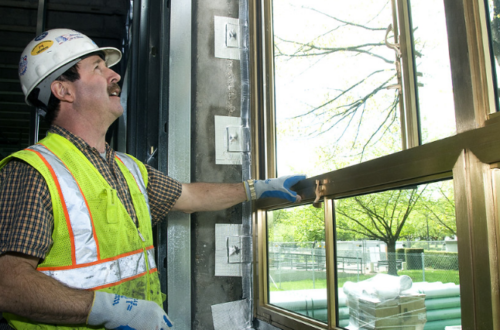Why are basements cold? Well concrete is very dense and cold year round, the earth is cold and, of course, in the winter the outside air is cold. Now heat moves from more to less. This concrete with all its thermal mass soaks up the heat from the basement and sends it outside to the ground and above grade to the cold winter air. Two other significant reasons your basement is cold are leaky single-pane windows and the edge of your floor framing system, called the rim joists which is leaky an uninsulated. A thermal image of this basement wall shows that it’s 54 degrees. It is 51 degrees so this concrete is very cold even now. It will be much colder in the middle of the winter and just sucking the heat right out of the basement.
If we look at this foundation from the outside of the house we see that the foundation is really warm compared to everything else, and that’s all the heat that is escaping through the uninsulated concrete wall. Your home either has a furnace and ducks or a boiler. This home has a boiler and if we take a look at it with a thermal-imaging camera we can see that parts of this boiler are a hundred and seventy-five degrees and the piping that goes through the house is very warm. Normally this heat would rise and warm the floors but it is lost to the uninsulated basement walls, windows and rim joist.
FOAMAX insulation is special foam — polyisocyanurate foam which has a very high R value per inch and is rated to be left exposed in an unfinished basement unlike other foams It’s also a vapor barrier on your basement walls and will direct any wall seepage down to a perimeter drain system below. As you can see the FOAMAX makes a big difference already between what is insulated and the bare concrete walls, and the only reason this wall is as warm as it is — even though it’s much colder than the FOAMAX — is that it’s been sitting here absorbing heat from the basement.
So you know, when we talk about heat loss we talk about what’s the surface area, how many square feet in the basement. The basement walls represent about a thousand square feet of space that’s just sucking heat out of the house.
We also talked about temperature difference. What is the temperature difference across this assembly? Inside we want it to be of course 70 degrees and outside — you know — it could be 20 degrees, thirty degrees, 10 degrees, forty degrees, so we have a big temperature difference across this wall. And then we talk about time.
How long is that temperature difference and really, I mean, it’s all winter long! And really there’s a temperature difference most of the year. So we have a lot of time, a lot of surface area, and a significant temperature difference for much of the year. So insulating the basement walls will save a lot of heat over a year well. We have the FOAMAX installed on the walls, the rim joist is insulated with spray foam, we have brand-new Ever last basement windows. This basement will lose a lot less, it will be much warmer, and the floors above will be much warmer. The house will be less expensive to own because you’ve lowered your heating costs.




